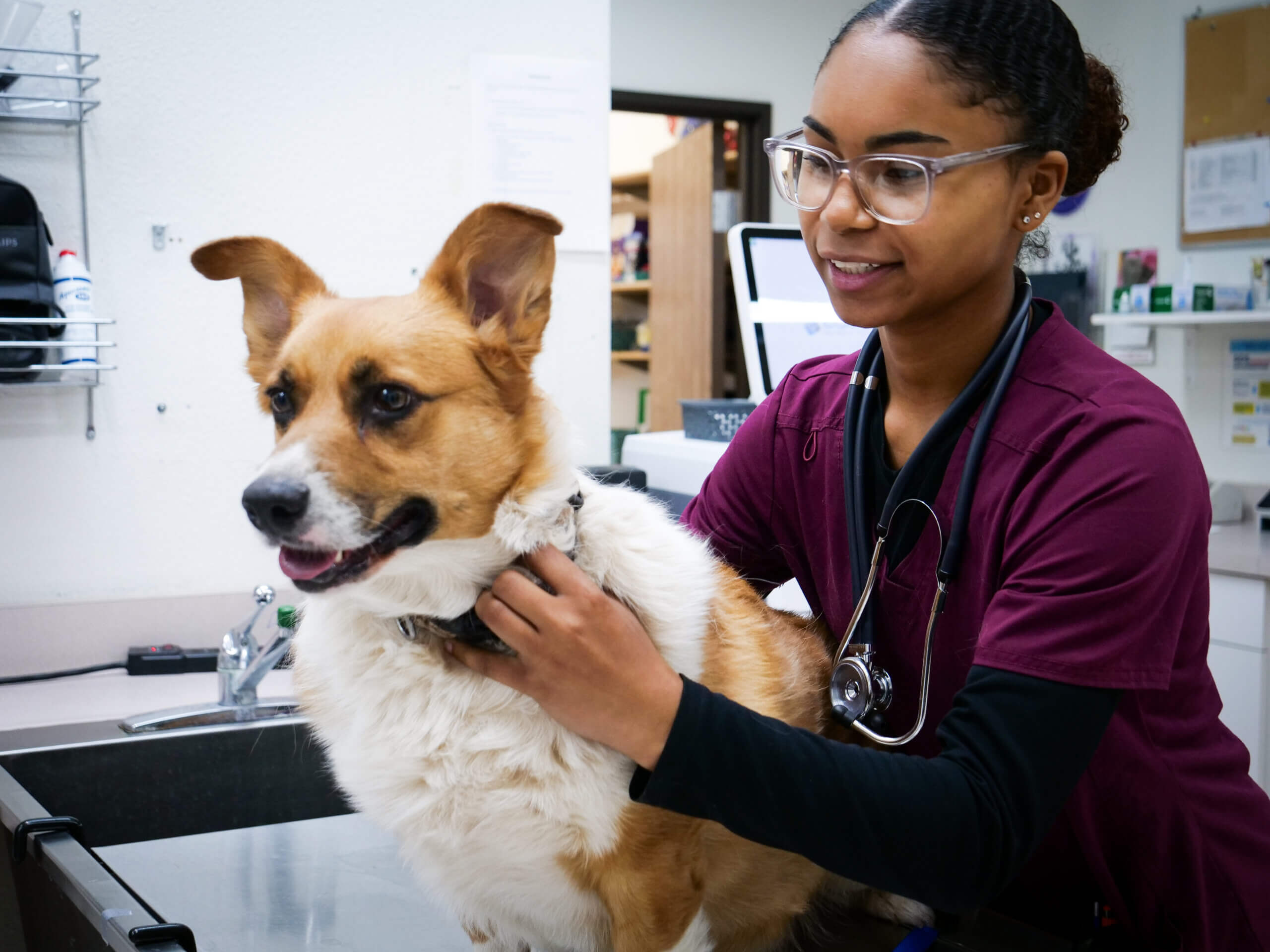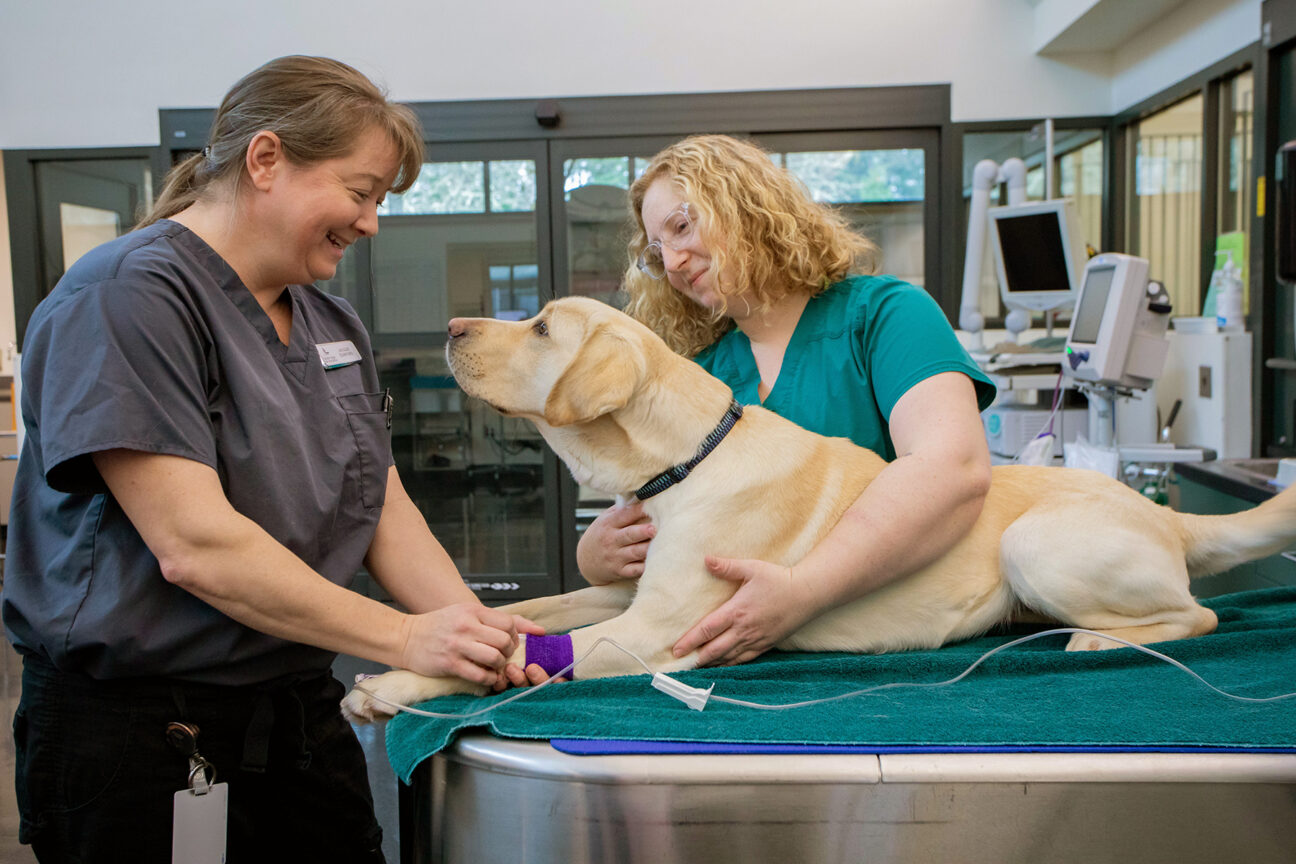How to Prepare Your Pet and Home for canine tplo surgery Recovery
How to Prepare Your Pet and Home for canine tplo surgery Recovery
Blog Article
All Regarding Vet Surgical Treatment: Comprehending the Value of Expert Treatment for Your Family pets
Vet surgical procedure is an essential component of pet dog health care. It encompasses numerous procedures, from routine optional surgeries to immediate treatments. Comprehending the ins and outs of these surgical treatments can help pet dog owners make notified choices. The prep work, execution, and recovery stages are essential for ensuring the wellness of animals. With proper expertise, proprietors can browse the intricacies of veterinary care. What variables should be considered before a family pet undertakes surgical treatment?
Types of Vet Surgeries
When a pet dog calls for surgical intervention, understanding the numerous sorts of vet surgeries can aid animal proprietors make educated choices. Vet surgical treatments can be generally classified right into 3 primary types: elective, immediate, and emergency surgical procedures. Elective surgical procedures, such as spaying or neutering, are prepared procedures that are not right away dangerous. Urgent surgical procedures, like those for foreign body elimination, need to be performed quickly yet are not life-threatening in the moment. Emergency situation surgical treatments, such as those resolving serious trauma or inner bleeding, are vital and need instant attention.Additionally, surgical treatments can differ in intricacy, ranging from minimally invasive laparoscopic procedures to more extensive open surgical procedures. Each sort of surgical procedure brings its own risks and recovery processes. Understanding these classifications enables animal proprietors to take part in purposeful discussions with veterinarians, resulting in much better outcomes for their precious pet dogs.
Getting ready for Your Animal's Surgical treatment
Preparing for a pet dog's surgical procedure includes a complete list to guarantee all basics are covered. Efficient interaction with the vet is important for recognizing the treatment and any type of needed pre-operative actions - emergency vet. Additionally, having clear post-operative care guidelines will certainly assist owners give the very best support for their recovering animals
Pre-Surgery List Fundamentals
Ensuring a smooth medical experience for a pet dog needs cautious preparation and interest to detail. A pre-surgery checklist is important for family pet owners to adhere to. First, verifying the scheduled surgical treatment day and time is important. Owners ought to additionally validate that their family pet has actually fasted according to the veterinarian's instructions, commonly for 8-12 hours prior to surgery. Gathering necessary medical documents, including vaccination background, is essential for the vet's review. It is likewise advisable to prepare a comfy room in the house for the pet's healing after surgery. Ultimately, proprietors need to have a strategy for transport to and from the veterinary facility, seeing to it that the animal is secure and comfy throughout the journey. Adhering to these actions can considerably enhance the surgical experience.
Interacting With Your Veterinarian

Reliable interaction with the veterinarian is crucial for a successful surgical experience for animals. Proprietors should be prepared to review their pet dog's medical history, consisting of any type of pre-existing conditions, drugs, and allergic reactions. This info assists the vet examine dangers and customize the medical strategy appropriately. Furthermore, pet proprietors should ask inquiries regarding the procedure, anesthetic, and expected end results to ensure they totally comprehend the procedure. Clarifying any kind of doubts can relieve stress and anxiety for both the animal and the proprietor. It is likewise vital to connect any behavioral changes or worries observed in the animal leading up to the surgery. Eventually, clear dialogue cultivates trust fund and cooperation, making certain that pets obtain the most effective feasible care during their medical trip.
Post-Operative Care Recommendations
After reviewing the procedure with the veterinarian, pet owners must concentrate on post-operative treatment directions to assist in a smooth recuperation for their pet dogs. These directions usually include keeping an eye on the surgical site for signs of infection, such as inflammation or discharge. Pet dogs may require to be kept calm and confined to avoid extreme motion that can interrupt healing. Pain monitoring is crucial, so proprietors must adhere to the vet's advice on administering medications. Furthermore, nutritional restrictions may be suggested to avoid gastrointestinal distress. Normal follow-up visits are necessary to assure correct healing and deal with any type of issues. By adhering to these post-operative treatment directions, pet dog proprietors can substantially add to their animal's recuperation and overall well-being.
The Surgery Explained
The surgical procedure for family pets includes important steps that ensure their safety and security and healing. Pre-surgery preparations are necessary for decreasing threats, while post-operative care standards play an important function in advertising healing. Comprehending these components aids pet owners navigate the surgical experience better.
Pre-Surgery Preparations
Before an animal undergoes surgical procedure, numerous crucial prep work should occur to guarantee a secure and effective procedure. First, a complete veterinary examination is crucial to evaluate the pet's total health and recognize any kind of possible threats. This may include blood examinations, imaging, or various other diagnostics. The vet will additionally go over anesthesia choices customized to the family pet's particular needs. Additionally, animal owners are generally instructed to keep food and water for a defined time before surgery to reduce the danger of problems during anesthesia. It is necessary for proprietors to provide a complete case history, consisting of any medicines or allergic reactions, guaranteeing the medical team has all essential details. Correct interaction and adherence to pre-surgery guidelines can considerably improve the outcome of the procedure.
Post-Operative Treatment Standards
Correct post-operative care is essential for making sure a family pet's healing following surgical procedure. After the treatment, pets need to be monitored carefully for any kind of indications of problems, such as excessive blood loss, swelling, or unusual habits. It is essential to comply with the vet's guidelines concerning medications, consisting of discomfort relievers and anti-biotics. Animals should be kept in a peaceful, comfy setting to reduce stress and promote recovery. Restricting activity is important; short, leashed strolls might be essential, but jumping or running should be avoided. Normal follow-up visits ought to be arranged to assess the healing process. Additionally, the medical website must be kept tidy and completely dry, with any kind of signs of infection reported to a vet quickly. Abiding by these guidelines improves healing results.
Anesthetic and Discomfort Management
Effective anesthetic and pain administration are vital parts of vet surgery, guaranteeing that family pets continue to be comfortable and secure throughout the treatment. Vets examine each animal's individual needs, considering variables such as age, weight, health and wellness status, and the kind of surgical procedure being performed.Anesthesia protocols commonly consist of a combination of pre-anesthetic medications, induction representatives, and inhalant anesthetics, permitting specific control over the pet's level of awareness. Tracking during surgery is crucial; veterinarians continually observe important indications to deal with any type of potential complications promptly.Pain administration techniques might entail opioids, non-steroidal anti-inflammatory medications (NSAIDs), and regional anesthetics, tailored to the family pet's particular scenario. This complex approach assists minimize discomfort and advertises a smoother medical experience. By prioritizing efficient anesthetic and pain monitoring, veterinary specialists enhance the overall welfare of pet dogs undergoing procedures, guaranteeing they obtain the highest standard of treatment.
Post-Operative Care and Healing
Following dig this surgical procedure, the emphasis changes to post-operative treatment and recuperation, which is necessary for making sure a pet dog's risk-free go back to typical tasks. During this duration, animals call for a quiet, comfy atmosphere to help recovery. Proprietors must carefully check their family pets for any type of indicators of pain or uncommon behavior.Veterinary standards commonly include details instructions associated with medication management, injury treatment, and dietary changes. It is essential to abide by these recommendations to lessen difficulties and promote recovery. Pet dogs may require to be restricted from vigorous activities, such as running or jumping, throughout their healing period (animal emergency care bellingham).Regular follow-up appointments with the vet permit tracking of the pet's development and prompt adjustments to the treatment plan. Supplying psychological support and companionship can likewise improve an animal's recuperation experience, helping to minimize stress and anxiety and stress and anxiety. Overall, thorough post-operative care plays a considerable function in achieving an effective healing
Identifying Difficulties After Surgery
How can pet dog owners identify complications after surgery? Understanding of particular indicators is necessary for making certain the health of animals during recuperation. Typical indicators include excessive swelling, redness, or discharge at the medical site, which might signify infection. In addition, relentless pain, indicated by grumbling or hesitation to relocate, must prompt immediate interest. Changes in cravings or water intake can also show issues; a decline in these habits may indicate discomfort or distress.Moreover, animal proprietors ought to check their pet dogs for any uncommon actions, such as lethargy or trouble breathing, as these can be signs of significant problems. Vomiting or looseness of the bowels following surgical treatment might call for immediate veterinary examination. Acknowledging these issues early can considerably influence a pet's recovery process, emphasizing the value of caution and prompt communication with a veterinarian for any kind of worrying symptoms.
The Duty of Veterinary Specialists in Surgical Treatment
Veterinary specialists play an essential role in guaranteeing the safety and security and success of surgical procedures for pets, specifically complying with surgical treatment when keeping track of and treatment are paramount. These specialists consist of veterinarians, vet technicians, and assistance staff, all of whom contribute specialized skills to the medical process.Before surgery, veterinarians conduct thorough assessments to declawing cats evaluate the family pet's wellness, guaranteeing that any type of underlying problems are taken care of. Throughout the treatment, the medical team provides anesthetic, keeps sterile atmospheres, and checks key indications, all crucial for decreasing risks.Post-operative treatment is just as substantial; veterinary professionals observe for difficulties, take care of pain, and overview owners on healing practices. Their competence allows them to identify early indicators of distress or infection, ensuring timely intervention. Eventually, the collaborative initiatives of vet specialists in surgical care promote a risk-free setting, advertising the health of pets throughout the medical trip.

Often Asked Questions
Just how Do I Pick the Right Veterinary Specialist for My Animal?
Selecting the right veterinary surgeon involves investigating qualifications, reviewing reviews, and examining the facility's environment. It is vital to review the specialist's experience with specific procedures and their interaction design when choosing.
What Are Common Misconceptions Concerning Veterinarian Surgeries?
Common mistaken beliefs regarding veterinarian surgical procedures include beliefs that they are always high-risk, unneeded, or only for emergencies. Several pet dog owners ignore the advantages of preventative treatments and the ability included in veterinary medical care.
Just How Much Will My Pet's Surgical treatment Expense?
The cost of an animal's surgery can vary significantly based on factors such as the kind of procedure, the vet's experience, and geographical place (24 hour vet bellingham). Usually, costs range from a couple of hundred to several thousand bucks

Can My Pet Eat Prior To Surgical Procedure?
Before surgical treatment, it is normally suggested that pets avoid eating for a details period. This fasting aids decrease the risk of difficulties during anesthetic. Owners need to consult their veterinarian for accurate guidelines customized to their pet's requirements.
Suppose My Animal Has Pre-Existing Health Issues?
When a pet has pre-existing health conditions, it's vital for the vet to analyze these variables before surgical he said treatment. This analysis assurances proper safety measures are taken, lessening threats and enhancing the family pet's general safety during the procedure.
Report this page